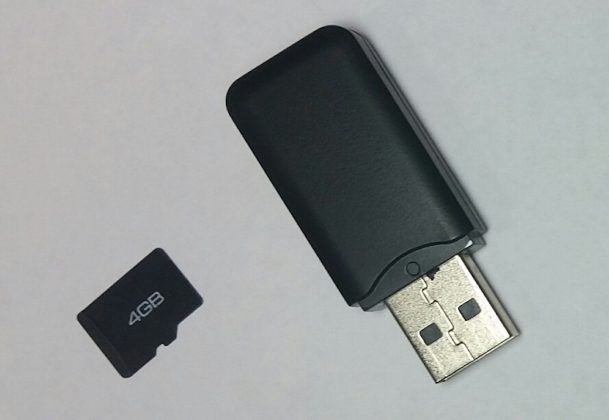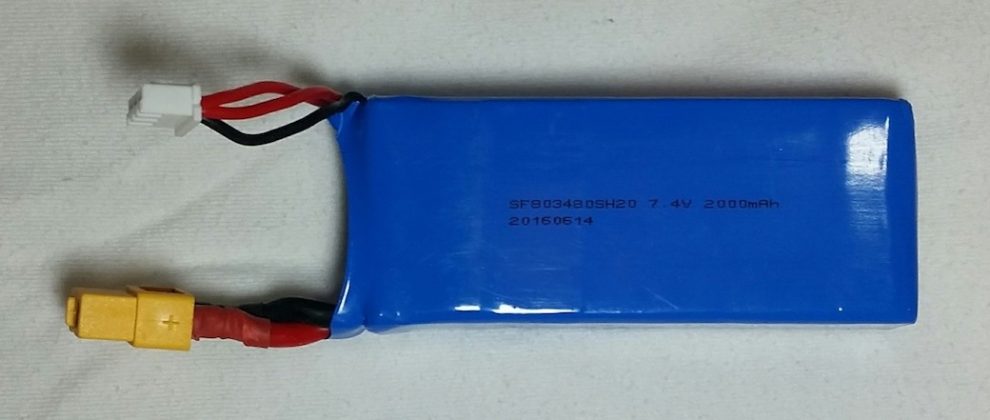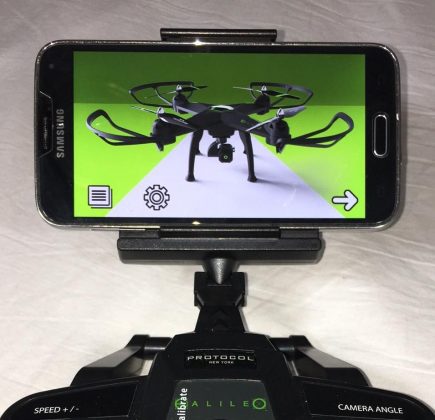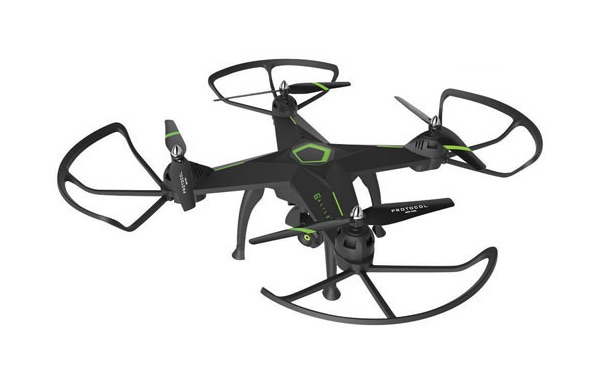 Take flight with me today as I examine the flagship drone of this year’s Protocol lineup. It’s called the Galileo Stealth Drone, and it’s a considerable upgrade from the original Galileo, which I reviewed last year and generally liked (although, at that time, I was judging from a position of having far less overall experience with drones than I do now). Keep on reading for full details of what this large quadcopter can do, along with the story of my experience testing it.
Take flight with me today as I examine the flagship drone of this year’s Protocol lineup. It’s called the Galileo Stealth Drone, and it’s a considerable upgrade from the original Galileo, which I reviewed last year and generally liked (although, at that time, I was judging from a position of having far less overall experience with drones than I do now). Keep on reading for full details of what this large quadcopter can do, along with the story of my experience testing it.
INTRODUCTION
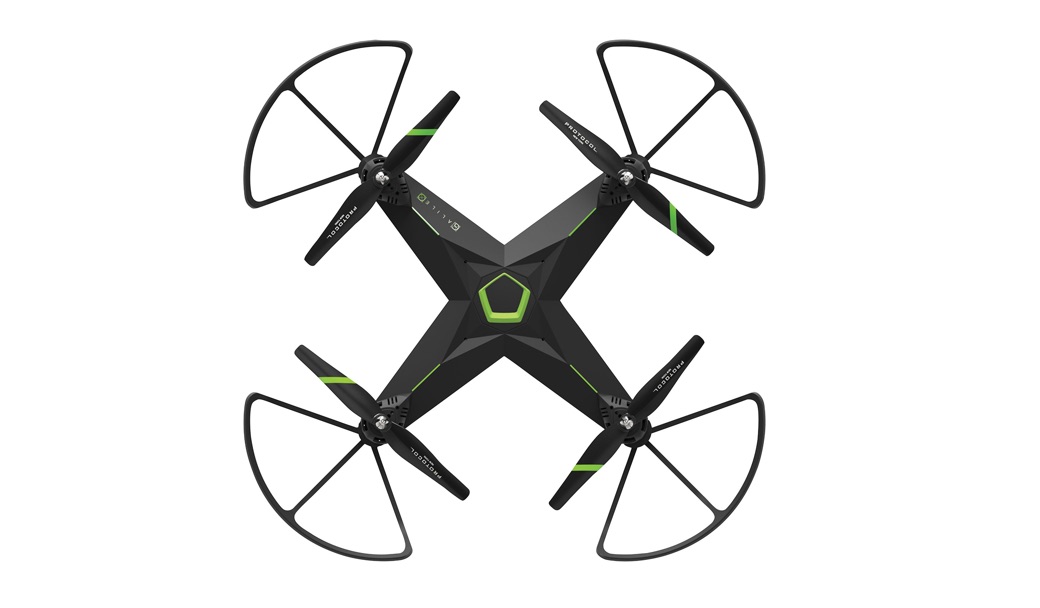 The Protocol Galileo Stealth Quadcopter Drone is a fairly large drone with a High Definition (1280 x 720 resolution) camera and motion sensitive 6-axis stabilization. With a total flight time of 7 minutes per single charge of its 2000mAh lithium polymer battery (see image gallery below), the Galileo doesn’t give you as much time in the air as some other drones do, but it can fly at a very respectable speed of 21 Km/h (or 13mph) and do some really cool tricks as well. It’s also made of crash-resistant materials that can survive some pretty nasty crashes, and its 2.4GHz controller has a special mount for attaching your smart phone. This, in conjunction with the Stealth’s freely downloadable app, allows you to live-stream video directly from your drone to your smart device. It’s a pretty cool feature that enhances the overall play value of this quadcopter, but how did the Stealth do in testing?
The Protocol Galileo Stealth Quadcopter Drone is a fairly large drone with a High Definition (1280 x 720 resolution) camera and motion sensitive 6-axis stabilization. With a total flight time of 7 minutes per single charge of its 2000mAh lithium polymer battery (see image gallery below), the Galileo doesn’t give you as much time in the air as some other drones do, but it can fly at a very respectable speed of 21 Km/h (or 13mph) and do some really cool tricks as well. It’s also made of crash-resistant materials that can survive some pretty nasty crashes, and its 2.4GHz controller has a special mount for attaching your smart phone. This, in conjunction with the Stealth’s freely downloadable app, allows you to live-stream video directly from your drone to your smart device. It’s a pretty cool feature that enhances the overall play value of this quadcopter, but how did the Stealth do in testing?
FLYING THE GALILEO STEALTH
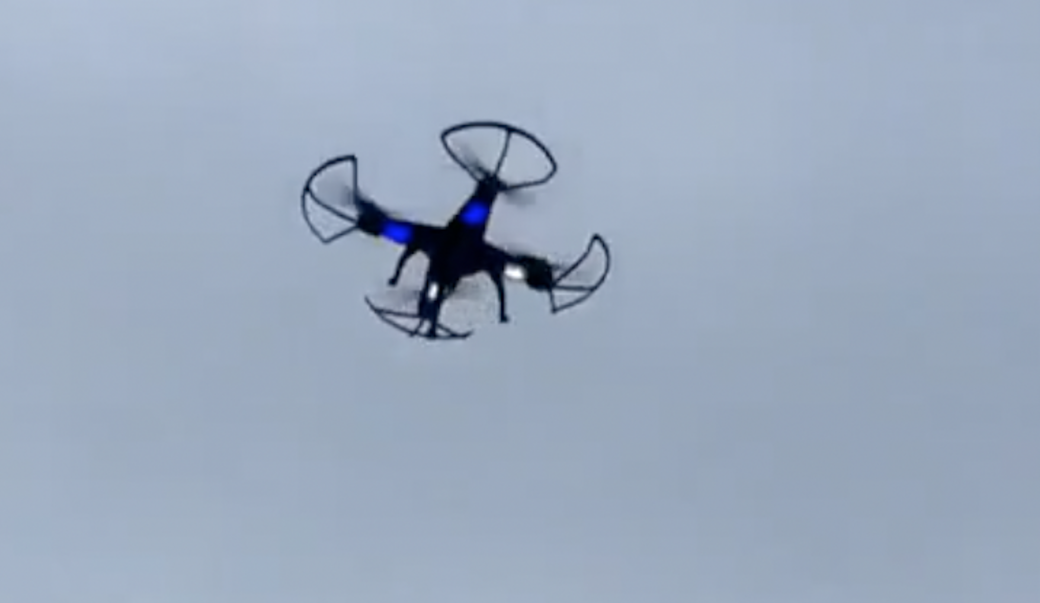 Flying the Galileo Stealth Quadcopter was certainly an interesting experience. The results of this testing were also a bit of a mixed bag, so heed my warning further down the page if you plan on picking one up!! One thing you need to know right off is that there is some assembly required before you can take your first flight. Both the drone’s legs and its prop guards must be screwed on with very tiny Philips head screws that seem to never quite want to go all the way into their holes without first trying to strip at the head. Luckily a small screwdriver is provided for this purpose, and the entire job really only takes a few minutes, with a total of 16 screws being installed. I would, however, choose to omit attaching the prop guards entirely if you’re already an experienced pilot. They only add extra weight to an already heavy drone and they tend to get in the way when you attempt to perform stunts. This is mostly due to the screws not holding the guards as securely in place as they should (since they refuse to go all the way in). I actually found that this made the guards a bit loose, and they would bounce around such that the propellers would actually nick them at times. In fact, one of the props on my test sample actually cut all the way through a piece of one of the guards (see image below), so I immediately removed them all and never looked back.
Flying the Galileo Stealth Quadcopter was certainly an interesting experience. The results of this testing were also a bit of a mixed bag, so heed my warning further down the page if you plan on picking one up!! One thing you need to know right off is that there is some assembly required before you can take your first flight. Both the drone’s legs and its prop guards must be screwed on with very tiny Philips head screws that seem to never quite want to go all the way into their holes without first trying to strip at the head. Luckily a small screwdriver is provided for this purpose, and the entire job really only takes a few minutes, with a total of 16 screws being installed. I would, however, choose to omit attaching the prop guards entirely if you’re already an experienced pilot. They only add extra weight to an already heavy drone and they tend to get in the way when you attempt to perform stunts. This is mostly due to the screws not holding the guards as securely in place as they should (since they refuse to go all the way in). I actually found that this made the guards a bit loose, and they would bounce around such that the propellers would actually nick them at times. In fact, one of the props on my test sample actually cut all the way through a piece of one of the guards (see image below), so I immediately removed them all and never looked back.
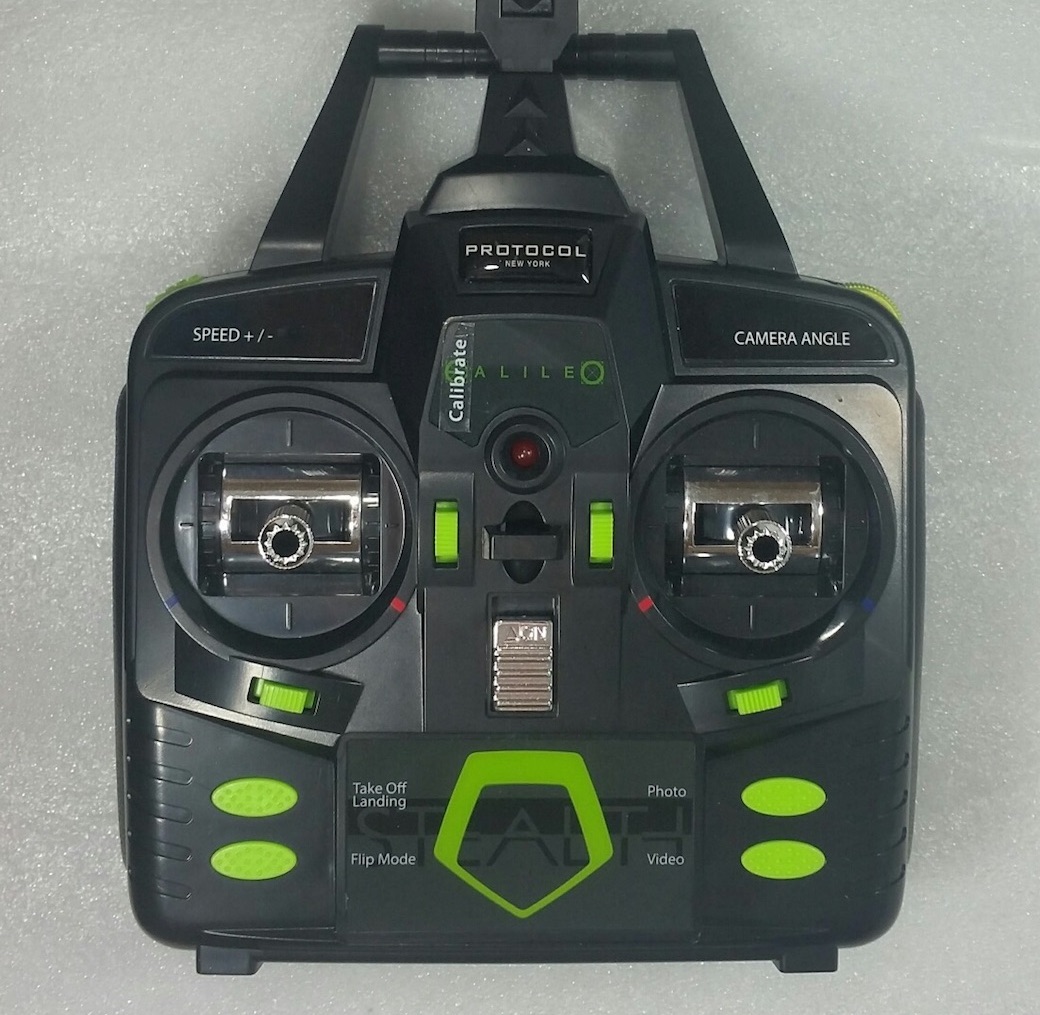 The Stealth’s controller, which is relatively light and has a number of specialized buttons (one each for things like doing flips, taking photos, and starting a video recording) requires 6 AA batteries to function and is actually quite a bit better designed than the original Galileo’s controller, which had many of its most important buttons unlabeled. This controller also has a mount attached (see photo gallery below) for holding your phone or other smart device. This allows you to use the Galileo Stealth App to live stream the video footage that your Stealth Drone is shooting in real time. A very cool feature!
The Stealth’s controller, which is relatively light and has a number of specialized buttons (one each for things like doing flips, taking photos, and starting a video recording) requires 6 AA batteries to function and is actually quite a bit better designed than the original Galileo’s controller, which had many of its most important buttons unlabeled. This controller also has a mount attached (see photo gallery below) for holding your phone or other smart device. This allows you to use the Galileo Stealth App to live stream the video footage that your Stealth Drone is shooting in real time. A very cool feature!
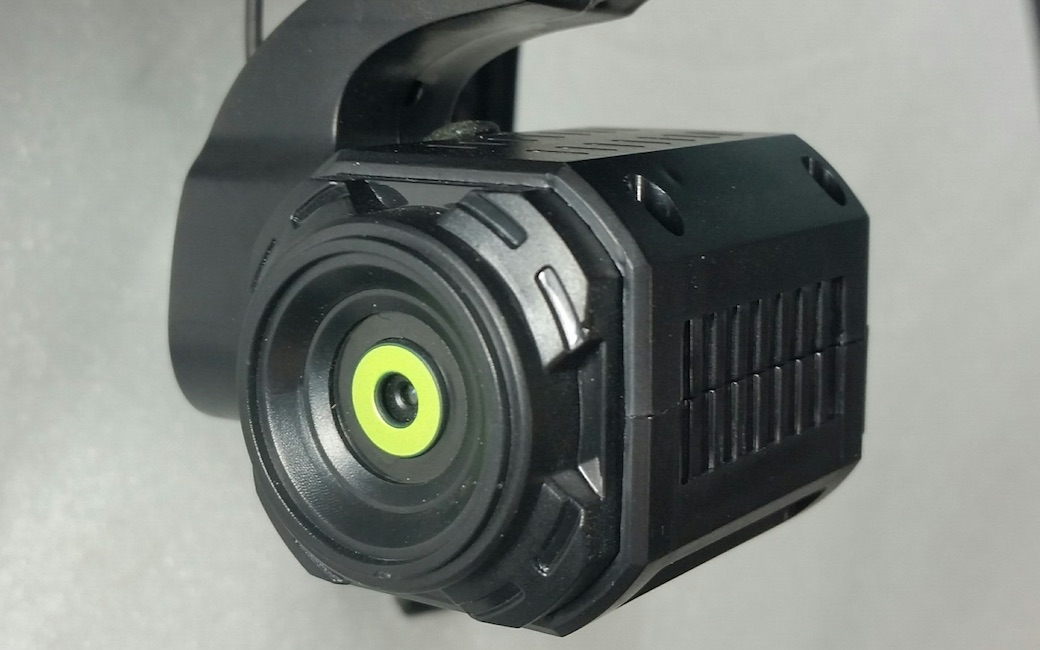 Speaking of the Stealth’s camera, this HD model features 1280 x 720 resolution & has a small slot in the back for the included Micro SD chip. This chip holds 4GB of digital video & photo files, and a small USB adapter (also included) makes for easy transfer of your recordings to virtually any computer. Both the chip and its USB transfer stick are shown in the image gallery below. As for the quality of the video & photos, I certainly wouldn’t rate it up there amongst the best drone cameras I’ve seen, but it’s also not the worst. If you want to take a look, there’s a brief clip somewhere near the middle of my video overview below. Although this drone’s camera is not suitable for making professional quality videos, it’s certainly good enough for just having fun making home videos and taking aerial photos as a hobby.
Speaking of the Stealth’s camera, this HD model features 1280 x 720 resolution & has a small slot in the back for the included Micro SD chip. This chip holds 4GB of digital video & photo files, and a small USB adapter (also included) makes for easy transfer of your recordings to virtually any computer. Both the chip and its USB transfer stick are shown in the image gallery below. As for the quality of the video & photos, I certainly wouldn’t rate it up there amongst the best drone cameras I’ve seen, but it’s also not the worst. If you want to take a look, there’s a brief clip somewhere near the middle of my video overview below. Although this drone’s camera is not suitable for making professional quality videos, it’s certainly good enough for just having fun making home videos and taking aerial photos as a hobby.
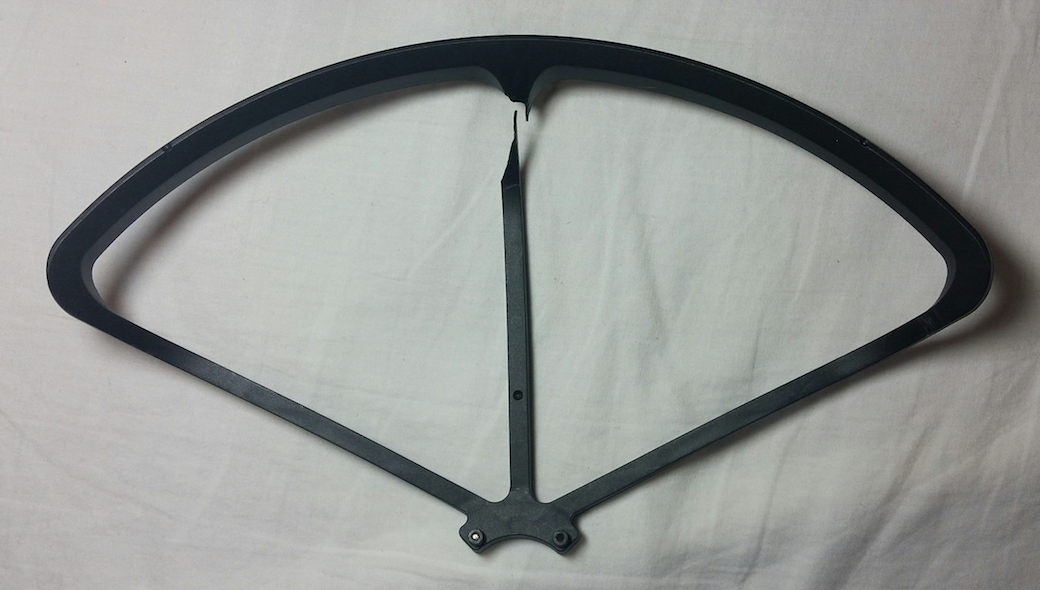 One incident that happened when I was flying the Stealth was that it actually took off on me once. I was flying it in a fairly large and wide-open park, and after making several successful passes back and forth and performing a few fun flips, the Stealth decided to exit the park over a fairly high fence and made for a clump of trees about 100 feet away. Thankfully I don’t fly very high when I’m testing these things, so I was well hemmed in by a row of trees bordering a street adjacent to the park. Unfortunately, my drone refused to come back no matter how hard I attempted to manipulate the controls, and it ended up catching itself in a tree about 30-40 feet off the ground. This led to the interesting spectacle of me climbing the tree after my wife went home to grab some rope and a ladder. I managed to recover the drone, but it wasn’t exactly easy. I would therefore suggest finding the biggest wide open space you can find for flying this drone in, and preferably one without any houses nearby!
One incident that happened when I was flying the Stealth was that it actually took off on me once. I was flying it in a fairly large and wide-open park, and after making several successful passes back and forth and performing a few fun flips, the Stealth decided to exit the park over a fairly high fence and made for a clump of trees about 100 feet away. Thankfully I don’t fly very high when I’m testing these things, so I was well hemmed in by a row of trees bordering a street adjacent to the park. Unfortunately, my drone refused to come back no matter how hard I attempted to manipulate the controls, and it ended up catching itself in a tree about 30-40 feet off the ground. This led to the interesting spectacle of me climbing the tree after my wife went home to grab some rope and a ladder. I managed to recover the drone, but it wasn’t exactly easy. I would therefore suggest finding the biggest wide open space you can find for flying this drone in, and preferably one without any houses nearby!
Even though I did have one scary incident, I still mostly enjoyed flying this drone. It’s relatively stable (if heavy) in the air, and I really had fun doing the flips. If you’ve got a proper area to fly it around in and enough skill to handle its speed and power, you can certainly have a good time with the Galileo Stealth!
EXAMINING THE VIDEO EVIDENCE
Please take a few minutes to watch my brief video of the Galileo Stealth drone in action. I got some really good flight footage this time around, including a few cool flips:
FINAL THOUGHTS
Whether or not you should buy the Stealth Drone depends on a number of factors that only you can gauge. If you’ve got the piloting skills to keep it under control at all times, and you’re not looking to shoot professional quality video & photographs, then it may well be worth picking up. If you don’t have a decent sized area to fly it in though, you may be better off getting one of Protocol’s smaller drones, or one of the small Parrot drones that are also currently available. For those that do wish to acquire a full sized drone, you may want to consider saving your pennies for something more full-featured, like the DJI Phantom 3. Although it’s more expensive, you do get considerably more bang for your buck with the Phantom 3 on a dollar for dollar basis. Not that the Stealth is a bad drone by any means. It’s just not the best offering in its size class. As long as your expectations are in line, however, I do think you’ll appreciate the Stealth. Good luck & enjoy your flight!

